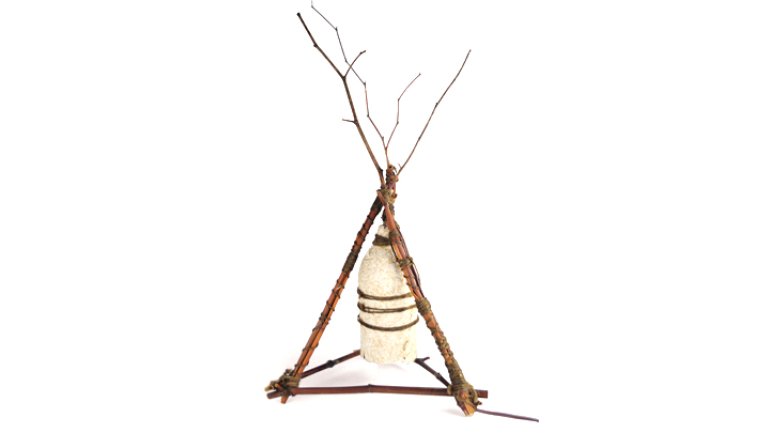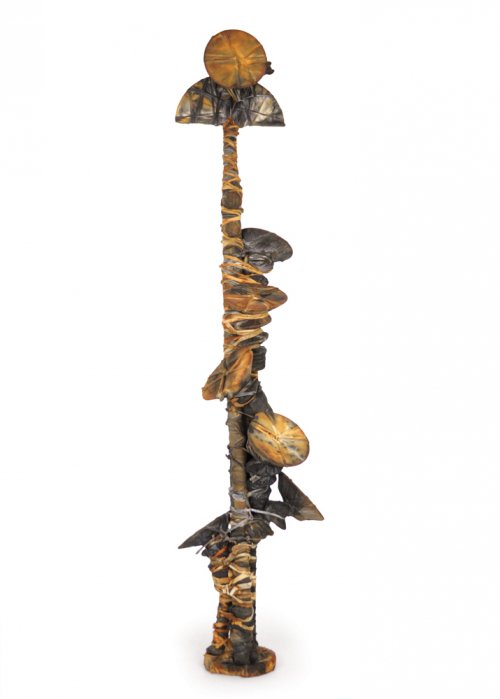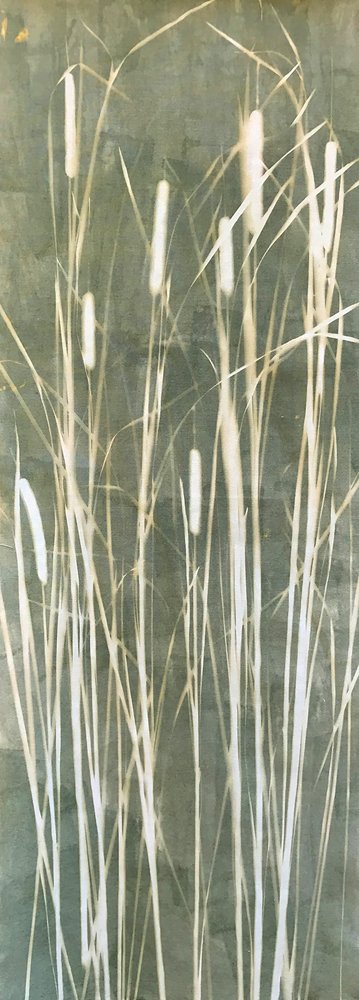Climate Change
Climate Change
PA / Pittsburgh
Contemporary Craft
"Crafting Conversations: A Call and Response to Our Changing Climate Through Art"
to January 15
As commuters bustle into downtown Pittsburgh’s busy Steel Plaza transit station, they’re greeted by a wall of 7-by-7-foot glass displays: Contemporary Craft’s Satellite Gallery in the BNY Mellon Center, currently filled with new artworks that address climate change.
Curators Katy DeMent and Ann Rosenthal saw the space as a perfect fit for a show about how people’s daily decisions affect the climate, nature, and each other. Placing the show where commuters view it every day affirms one positive action they’re already taking – using mass transit – and prompts them to think, “What else might I do?” says DeMent.
The show is produced by Creatives 4 Climate (C4C), a Pittsburgh group of artists, designers, educators, and scientists that organizes workshops, events, and exhibitions to inspire conversation and action on climate change. One of the selection criteria for artists in this show was their commitment to reconnecting people with nature, a link that often gets lost in American culture. “We have created a way of thinking and being in the world that is isolated and disconnected,” says Rosenthal. “We see ourselves and act as if we are separate from one another and the nonhuman life and systems on this planet, that our individual and collective actions have no impact.”
The works, each made in 2019, encourage viewers to see themselves as enmeshed with all life on Earth. Rose Clancy’s Francis, a sculptural form made of rusty found objects, salvaged fabric, and handmade black walnut dye, was left out in the open air, making it a collaboration between the artist and the elements. In Knotweed Lamp, Albert Pantone turns paper made of an invasive species into an elegant source of light. For her solar-dyed Cattails, printed on plant-based fabric, Joan Guerin harnessed the sun’s ultraviolet light. And with Rituals, Rites, and Reclamation: Earth Spiral, Ashley Kyber conceives a landscape-scale earthwork project that collects, filters, and oxygenates stormwater.
Displayed with the eye-catching art are thought-provoking words, such as a quotation from conservationist author Rachel Carson: “The more clearly we can focus our attention on the wonders and realities of the universe about us, the less taste we shall have for destruction,” and architect William McDonough’s poignant question: “How do we love all the children of all species for all time?”
The curators see art as “an underutilized and renewable resource” for making positive change. “We are largely past the point of just witnessing and reporting problems through art,” says Rosenthal. “With the 24-hour news cycle, we mostly know what the problems are.” Artists can bring complex issues to human scale, help people think about them in new ways, and even point to solutions.
And, the show’s organizers agree: Art is most effective when it offers hope.
“The C4C premise is that we are in a crisis situation,” says Kirsi Jansa, one of the group’s lead organizers. “Our approach is that we will be better off if we keep our eyes, minds, hearts, and hands open. Everyone is needed to heal our world, and everyone can do something.”






